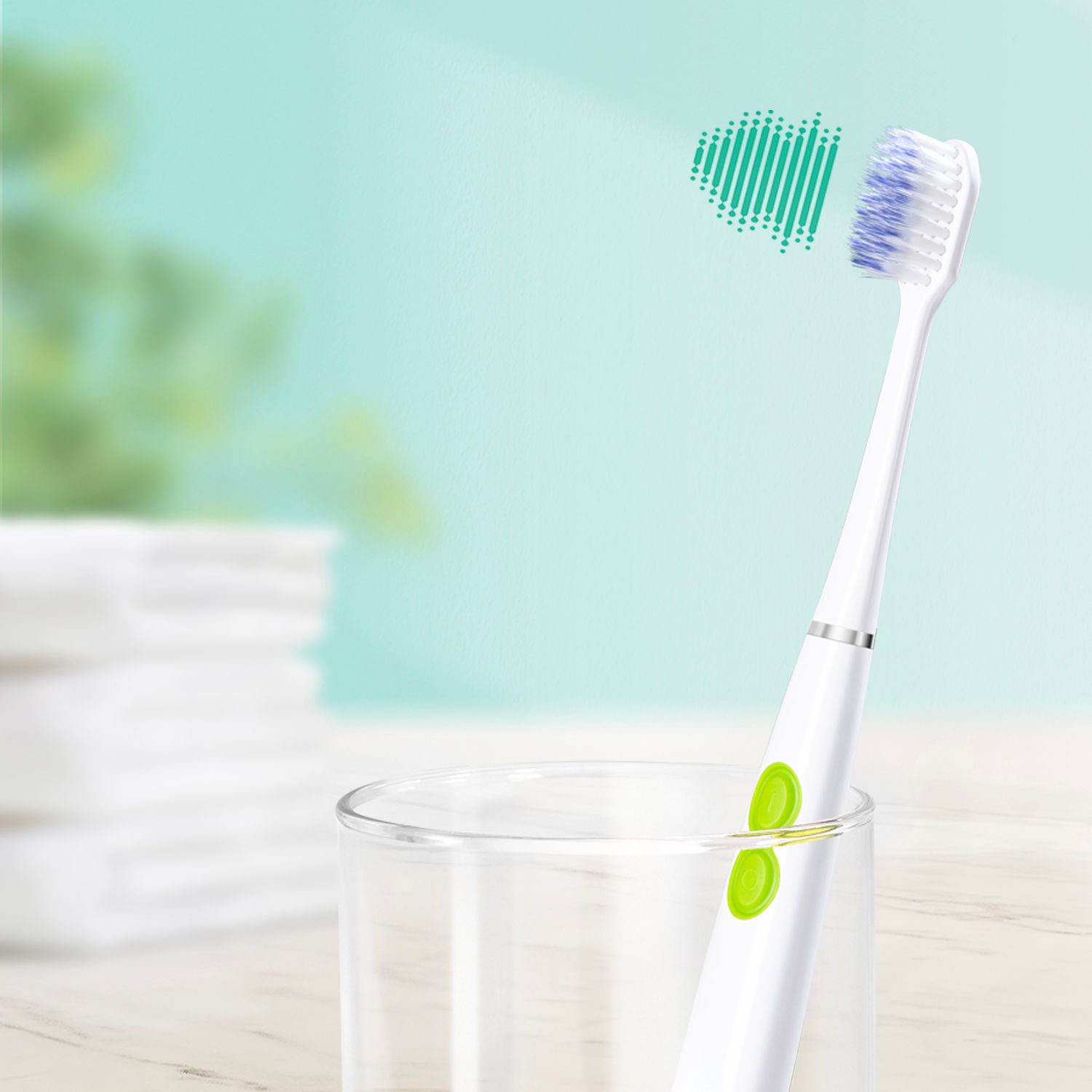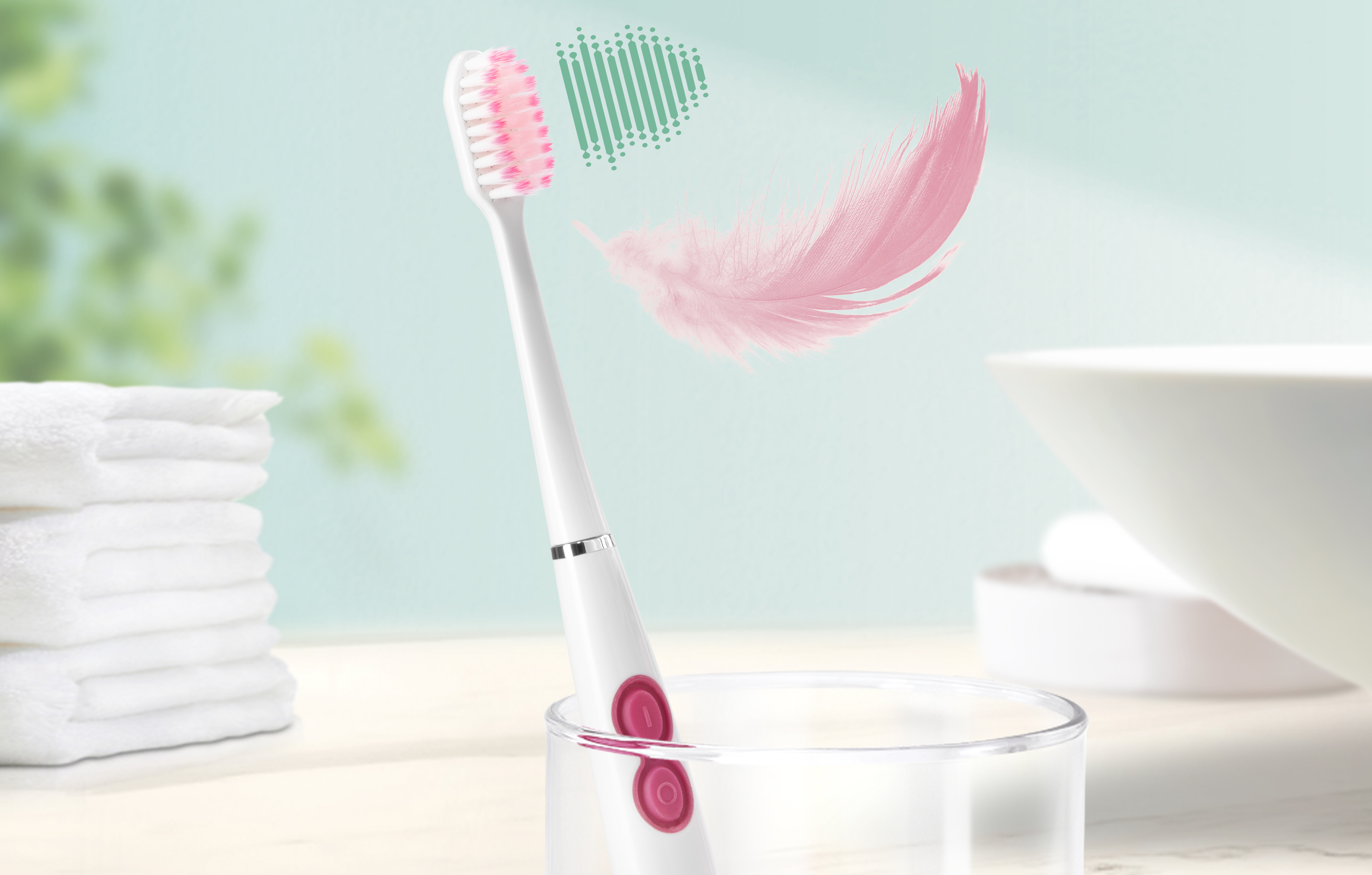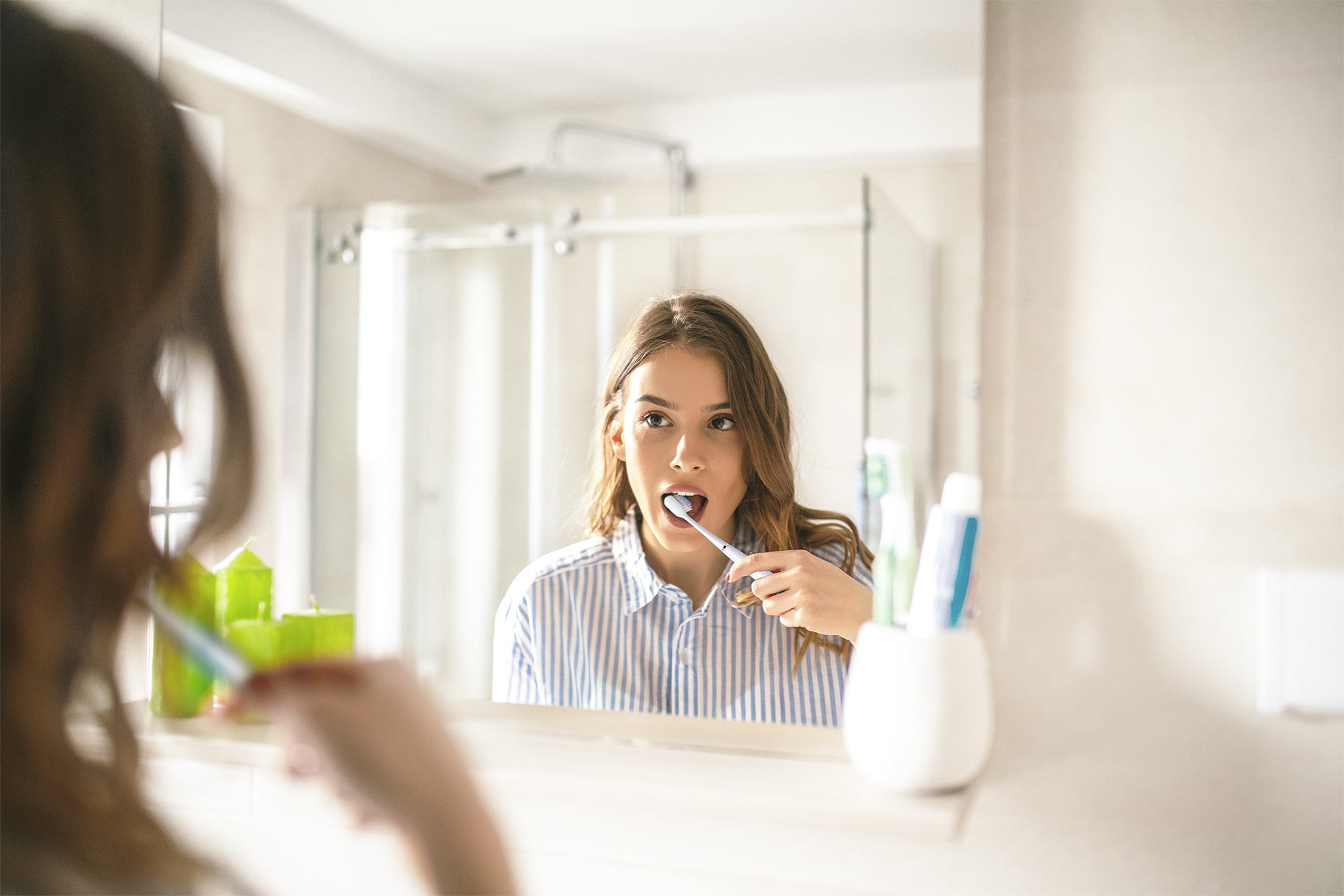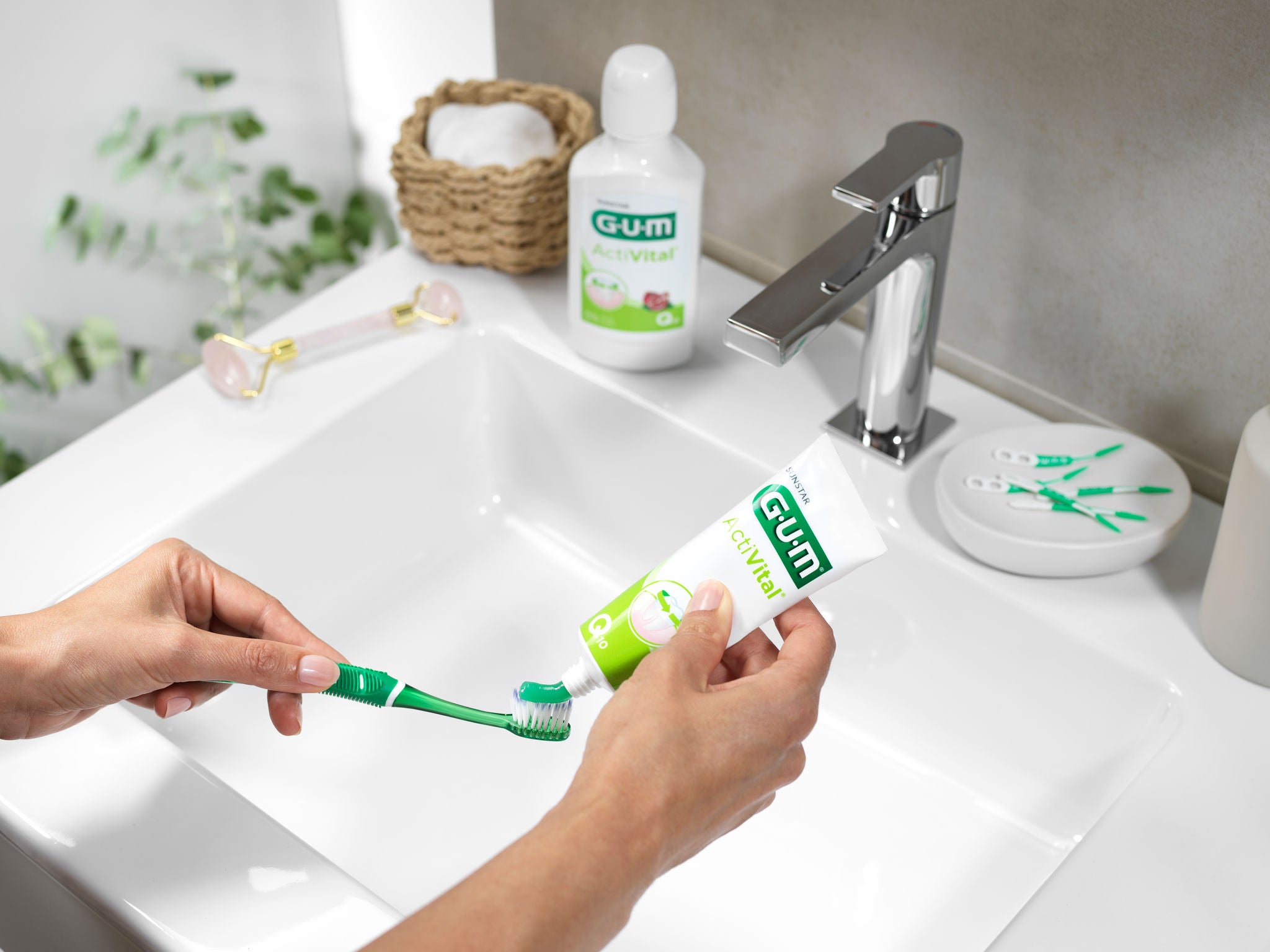
6 Tips to Help You Achieve Perfect Toothbrushing Technique
Most of us start brushing our teeth by ourselves around age 6. With twice-daily brushing, the average person will have brushed their teeth nearly 14,000 times by age 25! With that much repetition, our brushing habits are rather solidified by adulthood.
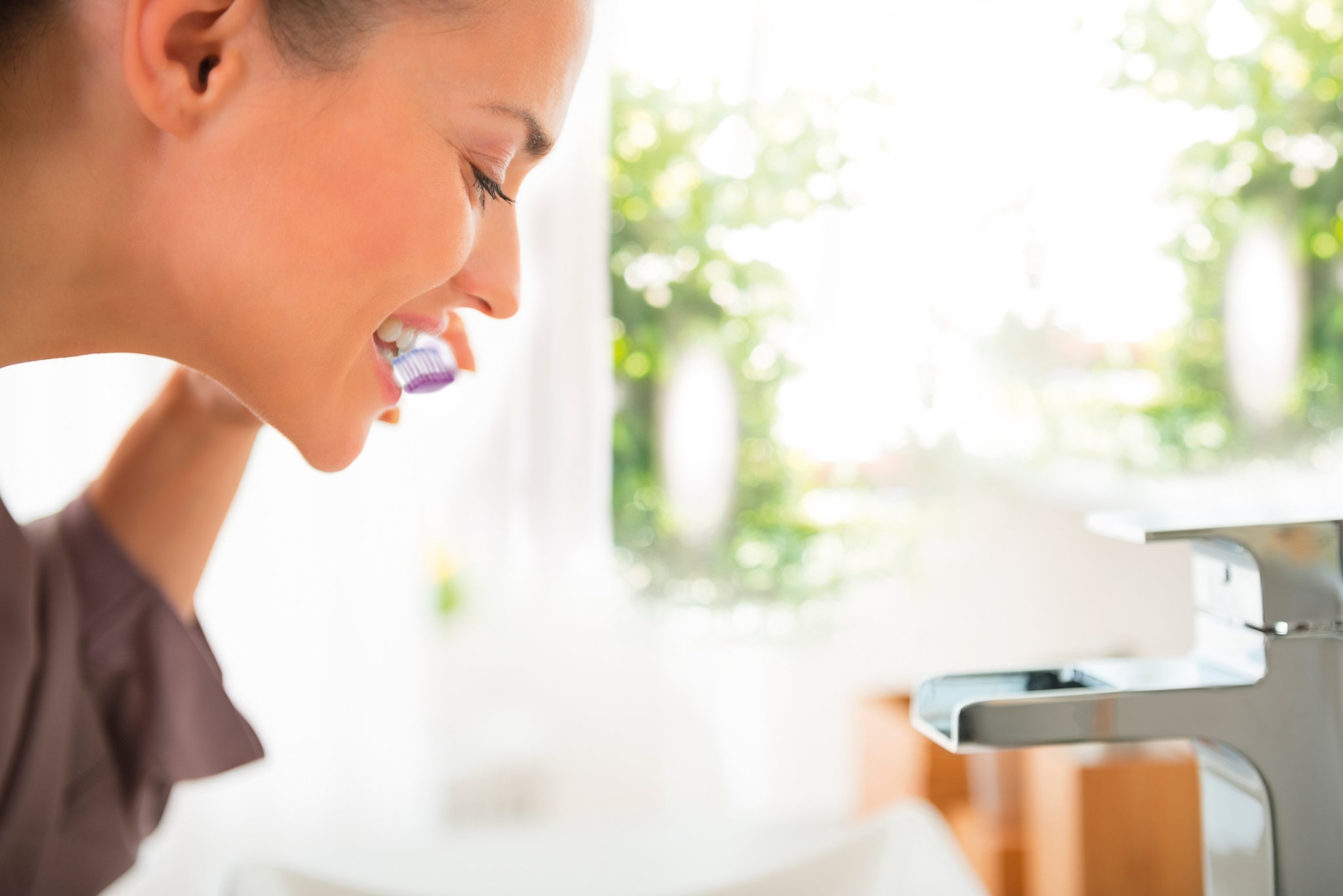
But could those habits be doing more harm than good?
When done incorrectly, brushing can actually damage your teeth and gums through a lack of effort in the right areas or too much wear in others. We recommend asking your dentist or dental hygienist about proper brushing techniques at your next visit.
In the meantime, here are a few best practices for brushing that you can add to your twice-daily routine, along with recommended brushes to strengthen your technique.
Tip 1: Perfect your brush position
You may be thinking, “The bristles go against my teeth, what could I possibly be doing wrong?” And you’re right – that’s 90% of the way to an optimal brushing form. The one adjustment that most people need to make is the angle of the brush head.
Plaque tends to develop on teeth along the gum lines. Holding your brush so the bristles meet your teeth at a 45-degree angle toward your gums is the best way to ensure the bristles are reaching just beneath the edge of the gum line, where you need them most.
Tip 2: Be mindful of your brushing movement
Once you have your toothbrush head at the correct 45° angle, it’s time to get brushing. There are a couple of techniques that optimize the effectiveness of brushing.
- Roll technique: sweep the brush across the surface of your teeth from the gumline towards the biting surface. This movement should come from your wrist.
- Bass technique: use small rotations of the toothbrush head at the gumline
You can also combine these techniques.
Avoid horizontal brushing which can flatten the gum tissue between the teeth (known as gingival papilla) and lead to gum recession.
If you choose an oscillating-rotating power toothbrush, however, there is no additional movement needed. Just position the round head at the junction tooth and gum and remain in contact with each surface for several seconds. Since the head is smaller than the width of some teeth like the molars, you will at times need to reposition to cover the whole surface of the tooth before moving to the next tooth.
How to brush your teeth properly
Tip 3: Use the proper brushing pressure
People generally think that more is better, but sometimes that gets us into trouble. In terms of brushing pressure, more can actually harm your teeth and gums. Over time excess pressure while brushing erodes tooth enamel and causes gums to begin receding.
The purpose of brushing is to remove food particles and the plaque that forms daily on your teeth. Once that plaque has hardened into tartar, it cannot be brushed away at home. Tartar removal is part of your twice-yearly dental cleaning routine at the dentist’s office.
You’re probably left wondering: What is the optimal brushing pressure to remove plaque?
The scientific answer is between 150 to 200 grams of pressure. The at-home answer requires an analogy.
Think about clearing off a kitchen counter. When you wipe a cleaning rag across the surface, the loose bits of food brush away quite easily, while any dried-on spots require extra elbow grease. Your goal with brushing should be to remove the “loose bits” of food and plaque – no elbow grease required. Your dentist will go after the dried-on spots.
Still uncertain? Ask your dentist if you can demonstrate your brushing technique, and they’ll help you find the right pressure to use. In addition, some electric toothbrushes have a pressure sensor and blink to alert you when you put too much pressure on your teeth with the brush.
Tip 4: Understand the proper duration and frequency of brushing
There is an optimal amount of time for brushing, too! Brushing for too short a time means you won’t adequately remove all the plaque. Brushing for too much time can start to wear on tooth enamel.
The ideal amount of time for brushing your teeth is two minutes each session, twice a day. To make it even easier to manage your brushing time, dentists recommend spending thirty seconds on each quadrant of the mouth: upper left, upper right, lower left, and lower right.
Tool tip: If you know any young brushers, you can help them set healthy habits right away with brushes designed with lights that indicate when to switch areas and when to stop brushing.
Tip 5: Cover all surfaces
You can’t remove food and plaque from areas you don’t brush. The following tips will help ensure you brush every surface in your mouth:
- Use the quadrant brushing method mentioned in the previous section: Upper left, upper right, lower left, and lower right.
- In each quadrant, brush outer surfaces, then inner surfaces, and finally chewing surfaces.
- Give extra attention to all surfaces of your back molars and the inner surfaces of your front teeth – two areas that are most commonly overlooked.
- Don’t forget to brush your tongue. Yes, this surface counts, too! Tongues harbor bacteria that can be harmful to teeth. (It’s also helpful for fresh breath.)
- Don’t forget to brush in-between your teeth, at least once a day. The side surfaces not reached by the toothbrush alone also need to be cleaned with interdental brushes (space permitting) or floss.
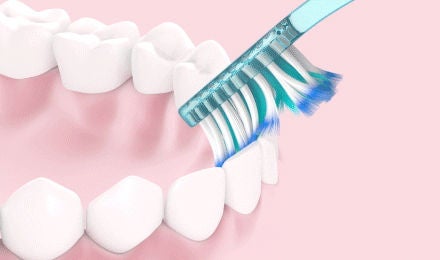
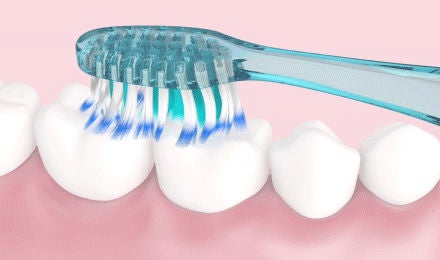
Tool tip: We understand that every mouth is unique and has different hard-to-reach areas. For teeth that are spaced close together, try a deep clean toothbrush with narrow bristles to help get into tighter spaces. For reaching back teeth – especially those third molars (wisdom teeth) that can be extra tricky – try a specially designed super tip toothbrush.
Always choose a toothbrush with a small head to allow for easier maneuvering in your mouth, so you can get a thorough clean everywhere.
Tip 6: Adapt your tools to your needs
Proper brushing can be difficult for a number of reasons, including limited mobility. Power toothbrushes are a great option for anyone who might need a little extra boost to their brushing efforts.
Interested in learning more?
Check out our how-to video that demonstrates these brushing techniques.
